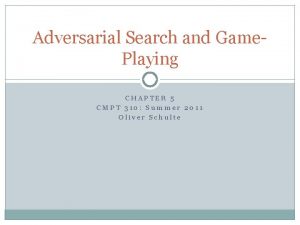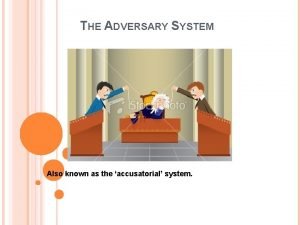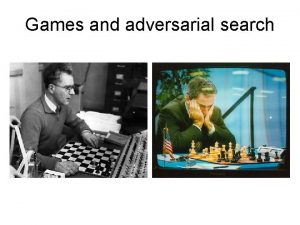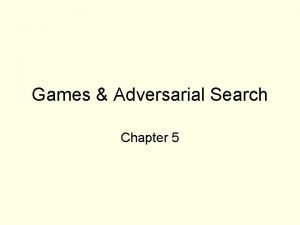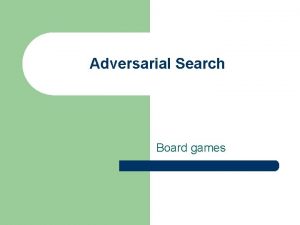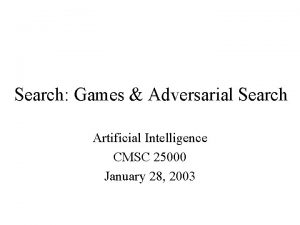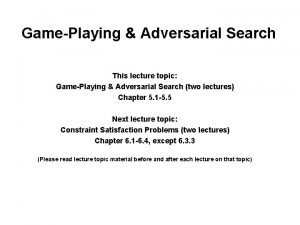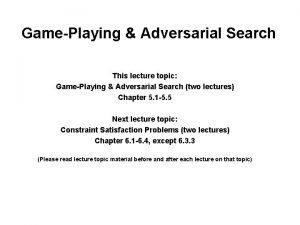Chapter 5 Adversarial Search 5 1 Games Why










- Slides: 10

Chapter 5 Adversarial Search

5. 1 Games

Why Study Game Playing? • • Games allow us to experiment with easier versions of real-world situations Hostile agents act against our goals Games have a finite set of moves Games are fairly easy to represent Good idea to decide about what to think Perfection is unrealistic, must settle for good One of the earliest areas of AI – Claude Shannon and Alan Turing wrote chess programs in 1950 s • The opponent introduces uncertainty • The environment may contain uncertainty (backgammon) • Search space too hard to consider exhaustively – Chess has about 1040 legal positions – Efficient and effective search strategies even more critical • Games are fun to target!

Environments • • • Static or dynamic? Fully or partially observable? Discrete or continuous? Deterministic or stochastic? Episodic or sequential? Single agent or multiple agent?

Zero-Sum Games (Constant-Sum) • Focus primarily on “adversarial games” • Two-player, zero-sum games As Player 1 gains strength Player 2 loses strength and vice versa The sum of the two strengths is always 0 (or constant).

A Game defined as a search A game formally defined with following elements: • S 0: Initial state, which specifies how the game is set up at start. e. g. , current board position • Player(s): Defines which player has the move in a state. • Action(s): Returns the set of legal moves in a state. • Result(s, a): The transition model, which defines the result of a move. • Terminal-Test(s): A terminal-test, which is true when the game is over, false otherwise. • Utility(s, p): A utility function (or payoff function, or objective function) defines the final numeric value for a game that ends in terminal state s for a player p. – Example: tic tac toe, utility is -1, 0, or 1

Using Search • Search could be used to find a perfect sequence of moves except the following problems arise: – There exists an adversary who is trying to minimize your chance of winning every other move • You cannot control his/her move – Search trees can be very large, but you have finite time to move • Chess has 1040 nodes in search space • Some two-player games have time limits • Solution? – Search to n levels in the tree (n ply) – Evaluate the nodes at the nth level – Head for the best looking node

Game Trees • Tic tac toe • Two players, MAX and MIN • Moves (and levels) alternate between two players

5. 2 Minimax Algorithm • Search the tree to the end • Assign utility values to terminal nodes • Find the best move for MAX (on MAX’s turn), assuming: – MAX will make the move that maximizes MAX’s utility – MIN will make the move that minimizes MAX’s utility • Here, MAX should make the leftmost move

Minimax Properties • Complete if tree is finite • Optimal if play against opponent with same strategy (utility function) • Time complexity is O(bm) • Space complexity is O(bm) (depth-first exploration) • If we have 100 seconds to make a move – Can explore 104 nodes/second – Can consider 106 nodes / move • Standard approach is – Apply a cutoff test (depth limit, quiescence) – Evaluate nodes at cutoff (evaluation function estimates desirability of position)

